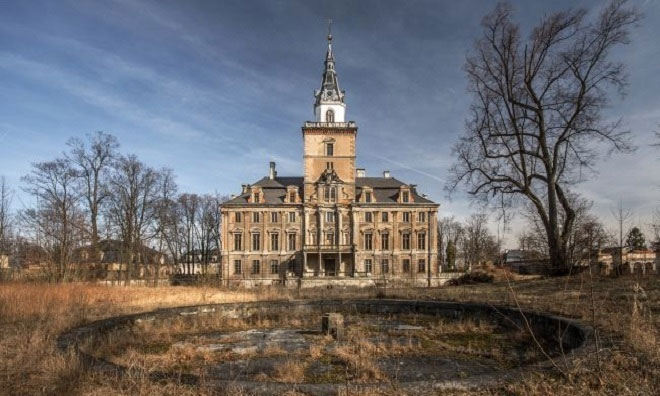Diary revealed the location of Nazi treasures
The diary, owned by Freemasonry for decades, may contain a map depicting hidden Nazi treasures .
The diary was written 75 years ago by a soldier from the Waffen Schutzstaffel Armed Forces (Waffen-SS) under the alias "Michaelis" , outlining the plans of Heinrich Himmler, the commander of Nazi guards. , to conceal invaluable possessions, antiques and artworks plundered in Europe.

Hochberg Palace in Poland. (Photo: Live Science).
The diary lists 11 places where the Nazis concealed gold, jewelry, paintings and religious treasures. One site in question is an abandoned well shaft nearly 60 meters deep, located under the Hochberg 16th-century palace in Roztoka village, southwestern Poland. The gold at the bottom of the well is thought to have come from Reichsbank in Breslau town, today the Polish city of Wrocław, estimated at billions of dollars.
For decades after World War II, Michaelis diaries were kept in the German town of Quedlinburg. The diary is owned by a Freemasonry, an organization that has existed for over 1,000 years. High-level Nazi officials are also members of the association. Michaelis, a member of Freemasonry at the time, was in charge of the Nazi transport network in southwestern Poland. Later, the members of the guild included descendants of Nazi officials.
But in 2019, the club handed back the diary to the Silesian Bridge association in Poland. Inside the diary there is a map marking the location of the well at the site of the Hochberg palace, the site of the Nazi treasure, according to Roman Furmaniak, representative of the Silesian Bridge association. The document also says that after hiding the treasure, the Nazis killed witnesses and dead bodies in the well, then used explosives to seal the mouth of the well.
Conservation experts determined the diary was written during World War II, but the Polish Ministry of Culture and Heritage has yet to confirm its credibility, according to Magdalena Tomaszewska, a ministry spokesman. However, the palace is located in Lower Silesia, an area with many caves, mines and tunnels as well as large castles and castles, providing the Nazis with many places to hide their possessions, even even great artwork. Currently, the owners of the Hochberg Palace are planning to renovate the structure and the conservation work will include searching for a buried well.
- The treasures in the legend are not yet found
- Found a ghost train containing treasures 70 years ago
- 10 huge treasures were found thrilling, with treasures of nearly 250,000 billion
- A bunch of abandoned Nazi bunkers 70 years after World War II
- Treasure legend: Amber room (Part 2)
- The hidden room in King Tut's tomb is full of treasures
- Syndrome K: Mysterious disease and spectacular trick for Nazi Germany?
- Blogs are not simply diary pages
- 5 knowledge treasures are destroyed by humans
- Egypt plans to move the treasures of Pharaoh Tutankhamun
- Mysterious fascist symbols in the German forest
- Mysterious treasures in Roman town buried with jewels, dolls and miniature skulls
 'Fine laughs' - Scary and painful torture in ancient times
'Fine laughs' - Scary and painful torture in ancient times The sequence of numbers 142857 of the Egyptian pyramids is known as the strangest number in the world - Why?
The sequence of numbers 142857 of the Egyptian pyramids is known as the strangest number in the world - Why? History of the iron
History of the iron What is alum?
What is alum?